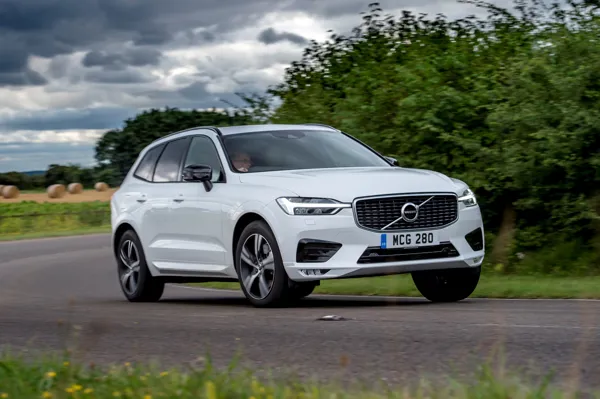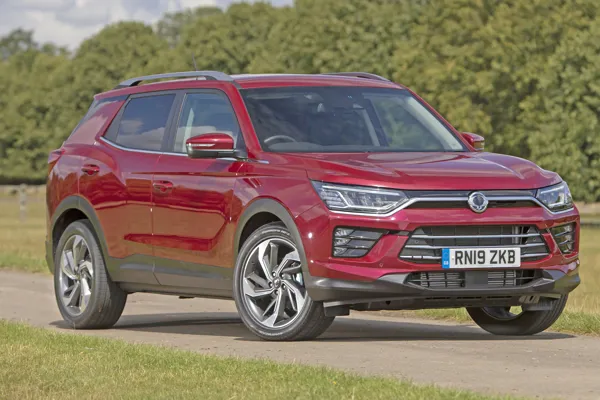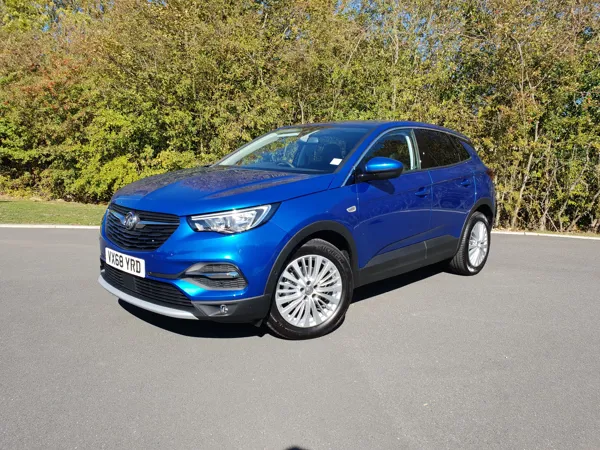Review
The time has come to bid a fond farewell to our Volcano Red Citroën C5 Aircross. Over the past six months, I’ve enjoyed the car’s Advanced Comfort programme, the high level of equipment that comes with the Flair Plus trim level, the build quality and the fuel economy. And all with only a couple of minor gripes along the way over the infotainment system and the wiper jets.
The C5 Aircross marries unique design features to sensible underpinnings to create a well-rounded SUV experience.
The C5 Aircross offers numerous personalisation options. These include 30 exterior combinations, with seven body colours (Polar White, Perla Nera Black, Platinum Grey, Steel Grey, Volcano Red, Tijuca Blue and Pearl White) and three anodised colour packs (Silver, White and Red). Exterior colours can also be combined with a Perla Nera Black roof.
The personalisation extends to the interior too, with three trim colours. In addition to the standard grey Silica cloth interior there’s also Metropolitan Grey leather and cloth and the oddly named Hype Brown leather interiors.
It’s hard to see that any drivers choosing a C5 Aircross would have much to complain about, but the C5’s design may not appeal to all.
A quick look on the Fleet News car running costs calculator to compare the C5 against some of its closest rivals, the Renault Kadjar, Nissan Qashqai and Peugeot 3008 (which shares its underpinnings with the C5), sees all these models close on price. They are also all very similar on CO2 and fuel efficiency while the C5 is slightly ahead on its residual value (RV). At four years/80,000 miles the Citroën C5 Aircross 130 Blue HDi Flair Plus has a cost per mile of 38.59p with an RV of £8,725.
While there plenty of similarly priced mid-sized SUVs on the market the C5 Aircross is a strong contender based on its overall user-friendliness and design appeal.
Early warning prevented tyre problems
While driving to the supermarket last week, a tyre pressure warning message appeared on the dash.
The system works by monitoring the rotation of the wheels via the ABS rings. If a tyre is losing pressure the radius gets smaller, the wheel has to turn faster and this triggers the warning.
Unfortunately, the Citroën system doesn’t indicate which tyre is the culprit and a quick visual inspection didn’t give any clues either. Satisfied that I didn’t have a puncture I drove on to the nearest fuel station to check all four tyres.
Correct tyre pressure information is handily located on a sticker in the driver side door.
The passenger side rear tyre had dropped by just 2psi which was enough to activate the warning message.
After checking and re-inflating, the system needs to be reset. This is done through the infotainment system by selecting the ‘car’ menu and choosing the snappily named ‘under-inflation initialisation’.
When your tyres are under-inflated, rolling resistance is higher than normal which makes the engine work harder and consume more fuel.
Under-inflated tyres can also overheat, reduce road-holding capacities, suffer premature wear and, in the worst cases, even blow out.
Petrol offers better running costs for lower-mileage users
After weeks of inactivity, other than me running the engine for a few minutes every two weeks, the C5 Aircross has been called back into service for a must needed trip to the Norfolk coast for some (socially distanced) ‘unlimited outdoor exercise’.
Good for the family but also good for the car, which has largely been sat gathering dust since lockdown began and, while my wife’s BMW has a completely flat battery, there were no such problems for the Citroën.
Battery, tyres and brakes, the main items which could cause problems after extended periods of inactivity, were all in good shape.
It’s worth pointing out that a good long run is important in a diesel car to give the DPF the opportunity to burn off any soot build up which could cause a problem later down the line.
Our 1.5-litre BlueHDi engine, with eight speed automatic gearbox, offers decent levels of power and refinement and is ideal for those drivers covering a variety of journey types, returning 58.6mpg and with a total running cost price of 39.14 pence per mile over four years/80,000 miles.
However, for those covering mostly short journeys the 1.2l PureTech petrol engine which returns 45.2mpg and has a total running cost price of 40.12ppm may be a better bet.
Boot space ahead of rivals
In last month’s review I wrote about Citroën’s Advanced Comfort programme and the C5 Aircross’s seats and suspension. Soon after writing, the country went into lockdown and I have had little opportunity (or need) to enjoy the Citroën’s levels of comfort – or, in fact, drive anywhere. The car currently sits on my drive with a tank of diesel which I filled more than three weeks ago.
What this period has given me is time to clear out the house of everything that my family no longer needs or wants. However, with recycling centres and charity shops closed indefinitely, I’ve nowhere to take all the unwanted items. That’s where the C5’s spacious interior has come into play. With 720 litres of boot space (seats up) thanks to its three individual sliding rear seats and removable boot floor, the C5 is ahead of rivals such as the Nissan Qashqai (430l) and the Mazda CX-5 (506l).
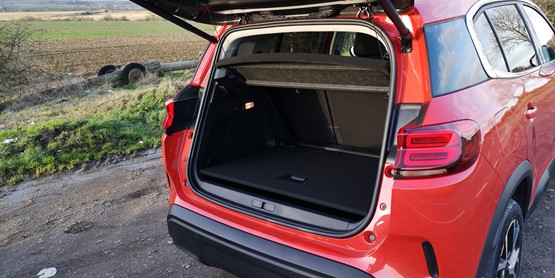
With rear seats folded flat the space increases to a generous 1,630 litres. More than enough for my current needs.
Loading is made easy thanks to the electrically-operated tailgate although the foot-operated sensor sometimes takes a lot of foot waggling.
Hopefully, things will return to some sense of normality soon and I can get the car emptied.
Advanced Comfort features give a smooth ride
You will probably remember the ‘adventure just got civilised’ TV advertising campaign in which Nigel Owens MBE (international rugby referee) tames a wild bear, gives it a haircut, teaches it to play the double bass and dresses it in a dinner suit to promote the civilised manners of the C5 Aircross.
The C5 is part of Citroën’s Advanced Comfort programme and includes two exclusive innovations, the first being suspension with Progressive Hydraulic Cushions which filters and absorbs surface unevenness. It is designed to give passengers a smooth driving experience by using two hydraulic stops – one for rebound and one for compression which gradually slow down the suspension movement to avoid sudden jolts at the end of travel. The other innovation is Advanced Comfort seats which include a layer of 15mm-thick foam to make the seats softer and more durable. The front seats are also filled with high-density foam to help avoid poor posture after long periods and its three individual, sliding, incline-adjustable and folding rear seats make the C5 the most modular and spacious SUV in its segment, says Citroën.
It certainly is comfortable to drive, even on long journeys. My only slight niggle is that the suspension and softer seats together with the automatic gear box and start/stop can make the car feel a little boat-like in slow moving traffic.
Things we don't like about the Citroen C5 Aircross
The C5 Aircross is one of my most liked long-term test cars in recent years. I took delivery of the Flair Plus just before the end of 2019 and it has already cemented itself as a firm favourite.
With its distinctive styling, big wheels and subtle side airbumps, the C5 is unmistakably Citroën. I’m pleased there is nothing else on the market today quite like it. But that could make it a ‘love it or hate it’ car for some when it comes to kerb appeal.
That said, I do have some niggly gripes. The first is the opening panoramic roof (included on Flair Plus models). It’s a treat for rear seat passengers, but, it is set so far back that it fails to bring any enjoyment to those in the front. In fact, it’s possible to forget it is there at all.
The second is the infotainment system. It follows that of its Peugeot brothers (our recently departed 508 had a very similar system) which consists of icons on touch sensitive dash-mounted buttons, physical push buttons and touchscreen buttons. It’s overly complicated and requires more eyeball time than should be necessary.
For example, to change the fan speed first you have to locate the icon referring to the control you want and press it, this takes you into the climate control menu, you then tap the screen for the settings you require. I’m all for a clean dashboard but there are times when a simple dial will suffice.
The washer jets are mounted to the wipers (also the same as the Peugeot 508) and are very slow to react when activated.
The rear-view camera, while okay during the day is hard to see at night due to the very poor picture quality on the screen.
My last small gripe is with the start/stop button. Rather than press and release to start, the button must be pressed and held, just for a second but just long enough for it to be an annoyance.
First world problems.
Small gripes aside, so far, the Aircross impresses in looks, comfort and build quality.
Citroen C5 Aircross 1.5 BlueHDI 130 Flair Plus joins our fleet
The Citroen C5 Aircross SUV is the brand’s third best-selling passenger car in the world (after C3 and C3 Aircross SUV).
It is available in three trim levels, Feel, Flair and Flair Plus, and four engines, 130PS petrol or diesel and 180PS petrol or diesel, with all but the 130PS petrol available with a manual or automatic gearbox.
Our test vehicle is a volcano red 130 BlueHDi diesel automatic model in Flair Plus trim emitting 106g/km of CO2 with an average fuel consumption of 56.3mpg. It’s worth noting that as of January 2020 Citroen has reduced the C02 figure to 100g/km.
Key features include: rear parking sensors, reversing camera with top rear vision, Mirror Screen including MirrorLink, Apple CarPlay and Android Auto, 19-inch diamond cut alloys, opening panoramic roof, keyless entry and start, sat-nav and hands-free tailgate.
The C5 Aircross stands apart through its unique design with strong features including stacked front lights and Citroen’s airbumps.
Comfort is high on the agenda. The C5 Aircross is fitted with the Progressive Hydraulic Cushions suspension system and advanced comfort seats, it has three individual sliding, retractable and tilting rear seats, and best-in-class boot space from 580 to 720 litres thanks to its removable boot floor.
Arnaud Belloni, Citroen marketing and communication director says the C5 Aircross is: “An SUV which allows you to brave the most demanding roads while experiencing real comfort on board. Because with a comfortable journey, you arrive 100% ready to embark upon any adventure!”
Specs
| Manufacturer | Citroen |
| Model | C5 Aircross |
| Specification | C5 Aircross SUV 1.5 BlueHDi 130 DPFR SS €6 Flair Plus EAT Auto8 20.5MY |
| Model Year | 0.00 |
| Annual VED (Road tax) | £0 |
| BIK List Price | £31,160 |
| CO2 | 139g/km |
| BIK Percentage | 30% |
| Insurance Group | N/A |
| CC | N/A |
| Fuel Type | Diesel |
| Vehicle Type | SUV and Crossover |
| Luggage capacity (Seats up) | 5litres |
Running Costs
| P11D | £31,160 |
| Insurance group | N/A |
| Fuel Type | Diesel |
| Cost per mile | 82.16ppm |
| Fuel | 8.69ppm |
| Depreciation | 71.55ppm |
| Service maintenance and repair | 1.92ppm |
Rivals
Info at a glance
-
P11D Price
£31,160
-
MPG
58.6 (WLTP) -
CO2 Emissions
139g/km -
BIK %
30% -
Running cost
3 Year 60k : N/A 4 Year 80k : N/A -
Fuel Type
Diesel







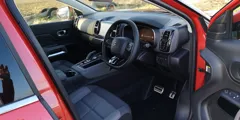
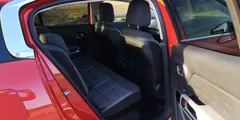

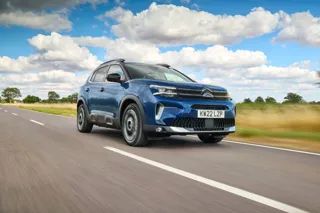
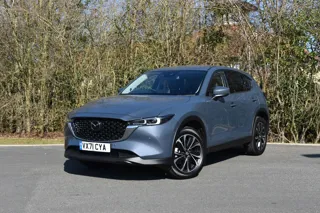

 Diesel
Diesel


